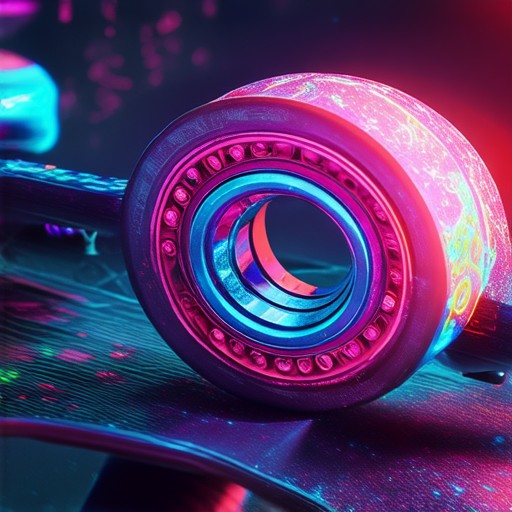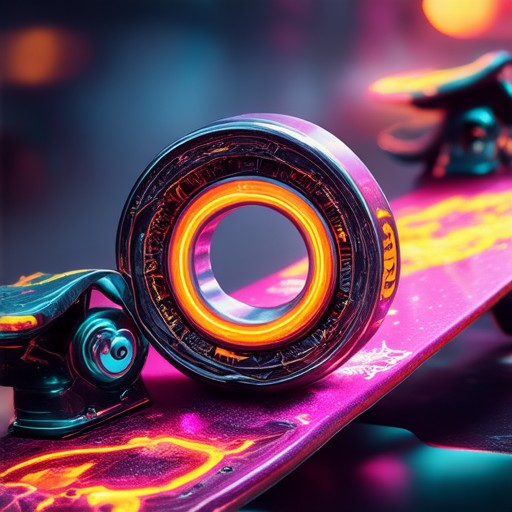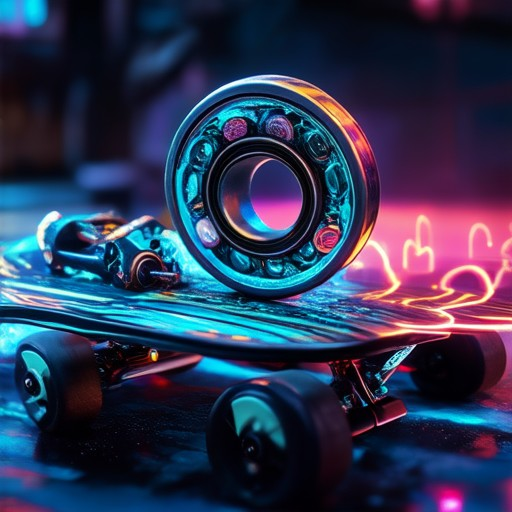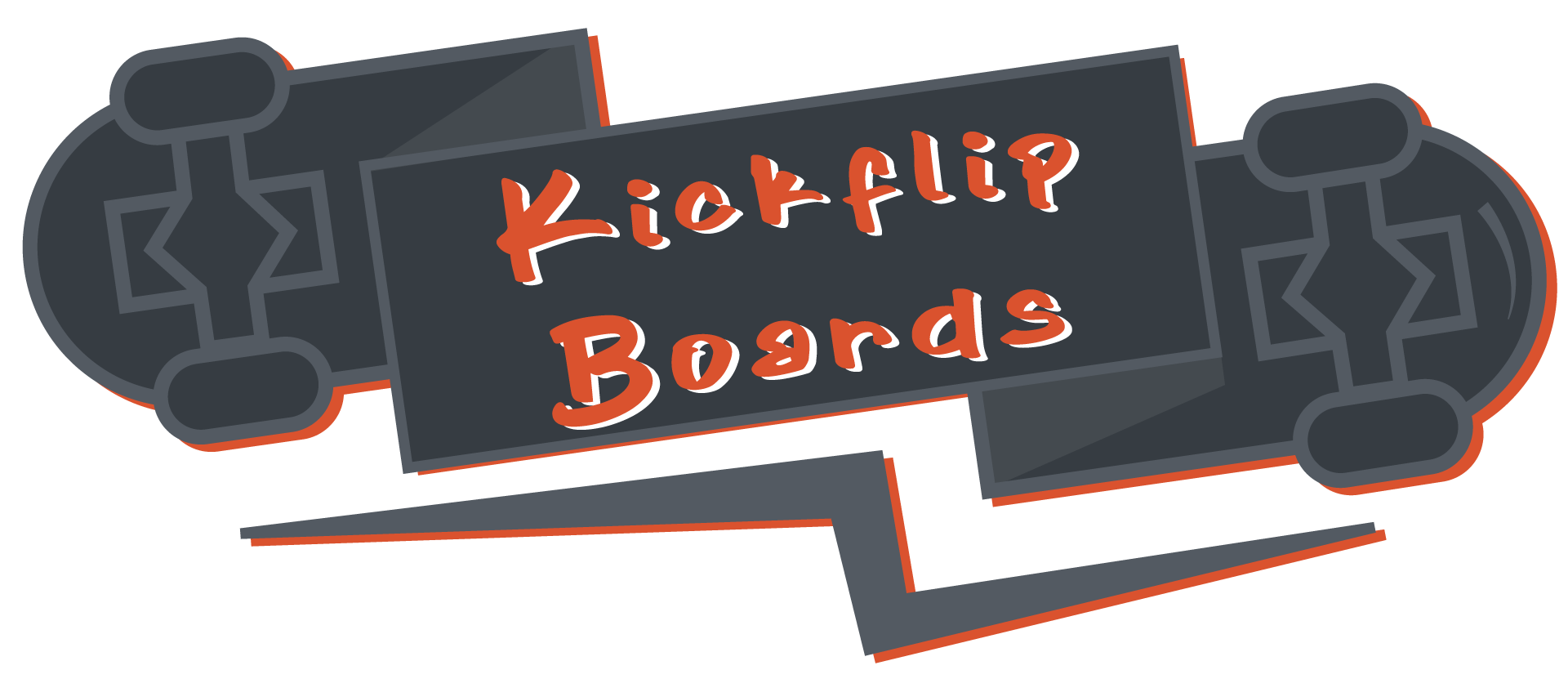Skateboarding is all about precision, speed, and control, and one of the most critical components of your setup is your skateboard bearings. Over time, these tiny but vital parts can become dirty, dry, or misaligned, leading to a rocky ride and potential damage to your board. Whether you’re a casual rider or a serious competitor, maintaining your skateboard bearings is essential for optimizing performance and ensuring longevity. In this ultimate guide, we’ll dive into everything you need to know about skateboard bearings maintenance, from cleaning and lubrication to replacement frequency and the best tools for the job. Keep your wheels turning smoothly with our expert tips and tricks for caring for your bearings.

Lubricating Skateboard Bearings
Skateboard bearings are critical components that ensure smooth operation and longevity of your board. Proper lubrication is essential to prevent wear, reduce friction, and maintain optimal performance.
- Why Lubrication Matters: Bearings on skateboards withstand significant stress due to impacts and continuous motion. Without adequate lubrication, they can become rusty, seize up, or lose their effectiveness, leading to a less responsive ride and potential accidents.
- Recommended Lubricant: Use a high-quality, waterproof lubricant specifically designed for bearings. Products like WD-40 or silicone-based lubricants are effective and long-lasting. Avoid using regular household oils or greases, as they can attract dirt and degrade performance.
- How Often to Lubricate: Apply lubrication every few months or after noticeable signs of wear, such as difficulty turning the board or uneven riding. Regular maintenance helps preserve bearing life and ensures smooth operation.
- Cleaning Bearings: Remove the bearings periodically and clean them with compressed air or a mild solvent to remove dirt and debris. This prevents contamination that can compromise the lubricant’s effectiveness.
- Storage Tips: Store your skateboard in a dry place when not in use. Excessive moisture can cause bearings to rust or malfunction.
- Signs It’s Time to Relubricate: If your board feels stiff, wobbles, or handles poorly, it may be time to inspect and relubricate the bearings. Listen for grinding noises or feel resistance when turning, which indicate worn-out bearings.
By following these guidelines, you can ensure your skateboard bearings function optimally, providing a safer and more enjoyable riding experience.
How Often Should You Change Skateboard Bearings?
Skateboard bearings are critical components that affect both the ride quality and longevity of your skateboard. While there isn’t a universal rule for how often to replace them, several factors influence the frequency:
- Riding Frequency: If you ride your skateboard daily or multiple times a week, inspect and potentially replace your bearings more frequently. A general guideline is every 3 to 6 months.
- Terrain and Conditions: Rougher surfaces or environments with lots of gravel, sand, or salt can wear down bearings faster. Consider checking and replacing them more often in these conditions.
- Maintenance Habits: Cleaning and lubricating your bearings regularly can extend their lifespan. Neglecting maintenance can lead to premature wear and imprecise tracking.
- Board Type: Different types of skateboards, such as cruisers or high-performance boards, may have varying needs. Consult specific guidelines for your board model.
When to Replace: – If you notice your skateboard’s handling feels loose or unstable.- After cleaning and inspecting, if bearings appear worn, cracked, or damaged.- If the bearings no longer spin smoothly or have excessive friction.
Tips for Bearing Care: – Clean bearings regularly with a soft brush and remove any debris.- Lubricate bearings with a suitable skateboard-specific lubricant to reduce friction and wear.- Store your skateboard in a dry place to prevent rust or corrosion.
By understanding these factors and following regular maintenance practices, you can ensure your skateboard’s bearings remain in optimal condition, enhancing both performance and safety.

Can you use 70% isopropyl alcohol to clean bearings on a skate?
Yes, 70% isopropyl alcohol can be used to clean bearings on a skateboard, but it should be done cautiously. While it can effectively remove dirt and grime, overuse may lead to residue buildup or damage to the bearings’ components. Always ensure the bearings are thoroughly dried before reassembly.
For optimal performance, consider applying a high-quality skateboard bearing lubricant afterward to maintain smooth operation and prevent premature wear. Avoid using excessive amounts of alcohol, as it can evaporate quickly and leave behind a drying residue.
Additionally, explore alternatives like specialized skatebearing cleaners or greases designed for long-lasting performance and protection. These products are tailored to handle the unique demands of skateboard bearings and may offer better results than household chemicals.

Is WD-40 Good for Cleaning Skateboard Bearings?
While WD-40 is a versatile product, it is not recommended for cleaning skateboard bearings due to its tendency to attract dirt and debris, which can increase friction and wear over time. Although WD-40 itself does not create rust, it can displace the lubricants that help protect bearings from moisture and corrosion.
For effective cleaning and lubrication of skateboard bearings, consider using specialized products designed for this purpose. These products are formulated to remove grease, grime, and debris without causing damage to the bearing components. Some popular options include:
- White Lithium Grease : Known for its thick consistency and ability to protect against wear and tear, white lithium grease is a safe alternative for cleaning and lubricating bearings.
- Sierra Candle Lubricant : A petroleum-based product that is specifically formulated for skateboarding bearings, providing long-lasting protection and reducing friction.
- Skate Bearing Cleaner and Lubricant : Products like those made by Kickflip Boards offer tailored solutions for skateboard bearings, ensuring optimal performance and longevity.
Always follow the manufacturer’s instructions when applying any lubricant or cleaner to skateboard bearings. Proper maintenance can significantly extend the life of your bearings and ensure smooth operation during your sessions.
The Best Lubricant for Bearings
The optimal lubricant for bearings depends on various factors, including the type of bearing, operating conditions, and environmental demands. Here’s a breakdown of the most common options:
- Grease :
- Usage : Ideal for 80 to 90% of bearing applications due to its ability to reduce friction and prevent metal-on-metal contact.
- Advantages : Stays in place longer compared to oil, making it effective for high-load or static applications.
- Oil :
- Usage : Suitable for environments requiring better lubricant circulation, such as open systems or low-pressure scenarios.
- Considerations : May not be as effective in preventing wear as grease in heavy-duty applications.
- Water-Based Lubricants :
- Usage : Effective in moist or humid conditions where oil might rust or corrode.
- Benefits : Provide consistent lubrication without the risk of oil migration.
- Synthetic Greases :
- Usage : Offer extended performance in harsh conditions, with varying viscosities catering to different load capacities.
For specific recommendations, consult the bearing manufacturer’s guidelines, as their expertise aligns with your unique application needs. Leading brands like SKF and Timken provide high-quality products tailored for various industrial applications. Always ensure the chosen lubricant meets the operational demands of your equipment for optimal performance and longevity.

Can You Use Lithium Grease on Skateboard Bearings?
Yes, you can use lithium grease on skateboard bearings, but it’s essential to choose a high-quality, lightweight lithium grease specifically formulated for bearings. These greases are designed to provide optimal lubrication while offering benefits such as reduced friction, excellent wear resistance, and water resistance, making them ideal for the harsh conditions skateboard bearings often face.
When applying lithium grease, ensure it is clean and free from contaminants. A small amount is sufficient, as excessive application can lead to messiness. Reapply the grease periodically, particularly after prolonged use or if it appears to be drying out, to maintain smooth operation and extend the lifespan of your bearings.
For the best results, consider using a lithium grease that is specifically marketed for skateboard bearings, as these products are tailored to handle the unique demands of the sport, providing reliable performance in various environments.




0 Comments